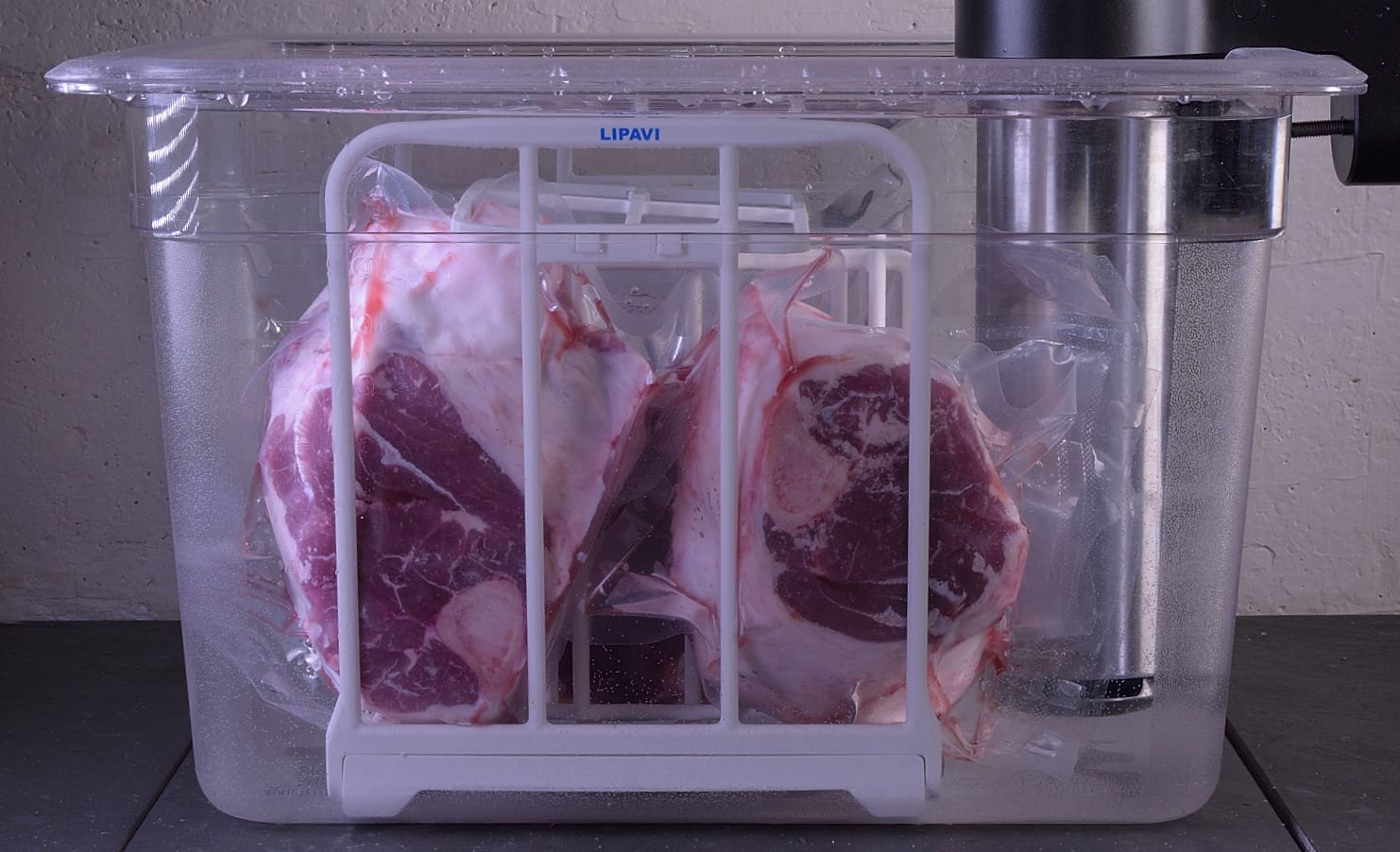
Above: Lipavi C10 container, N10 polycarbonate racks. Lipavi C10L lid.
Actual prep time, 1 hour
Serves 1 slice/person
Level of difficulty 3.0
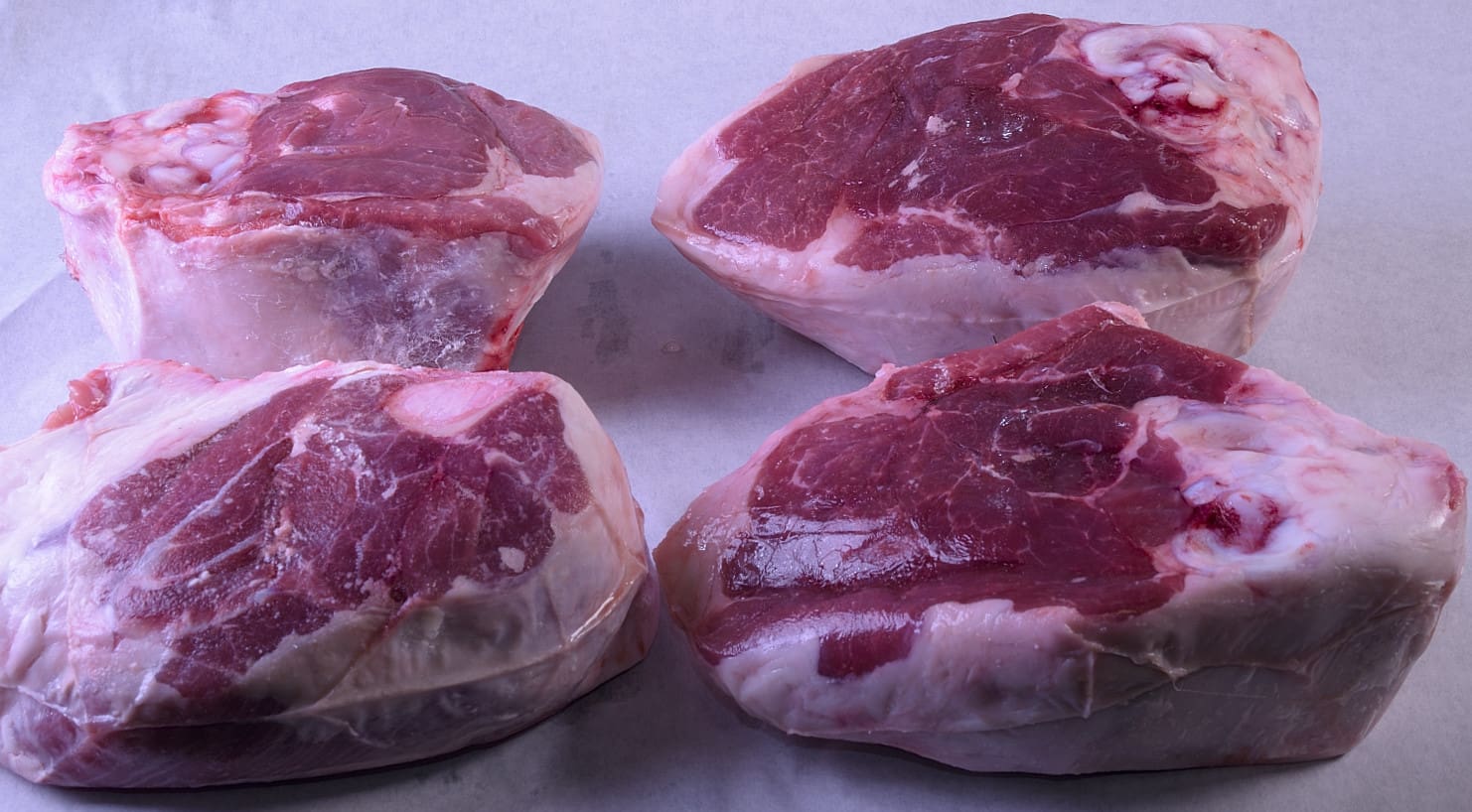
This large hind shank was cut into four slices.
Procedure: 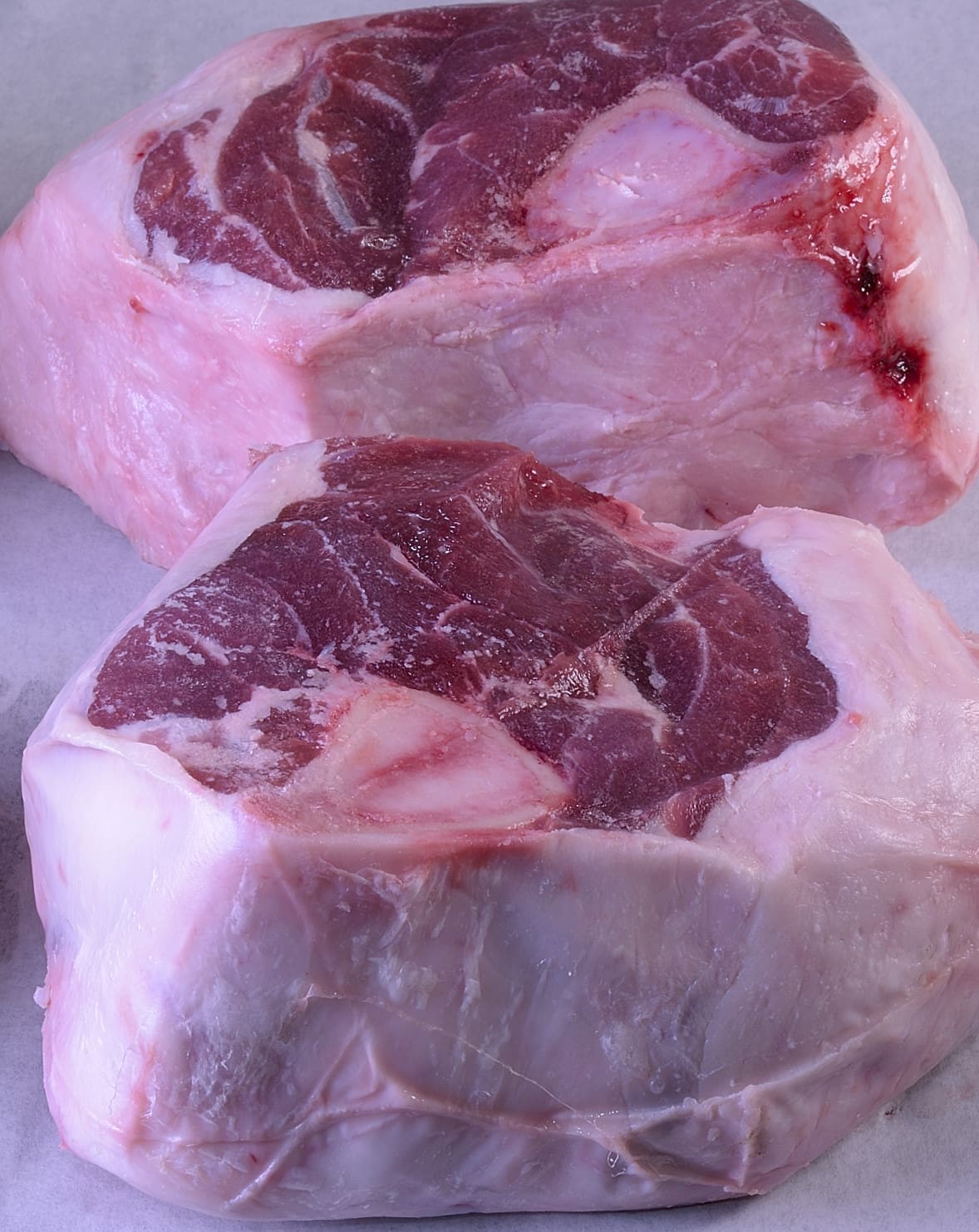
Arrange the shanks on parchment. Make sure the hole in the bone is facing up.
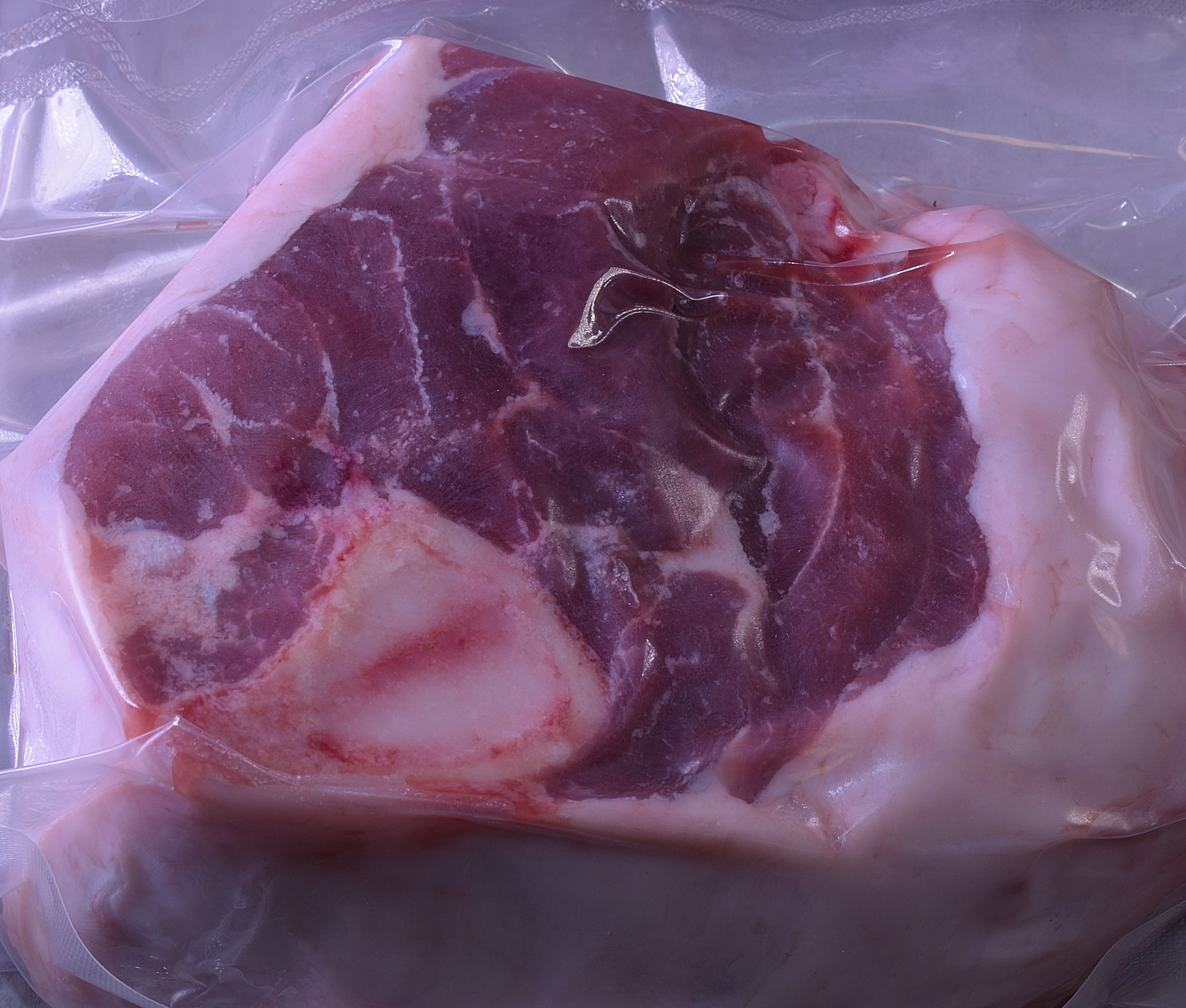
Preheat your sous vide bath to 140 F/60 C. Vacuum seal the individual lamb shanks in heat rated plastic bags. Sous vide process the packages initially for 36 hours. Use the method explained HERE to verify your desired level of tenderness.
When the interval has elapsed, shock the packages in iced water until they achieve 70 F/21 C. Refrigerate at 40 F/4 C until day of service. The sealed lamb shanks can be safely refrigerated in this state for at least two weeks.

Remove the packages from the refrigerator and submerge in hot tap water (or an operating sous vide bath) for five minutes to loosen the gel.
Cut a hole in the plastic pouch(es) and drain the juices into a microwaveable container or small sauce pan. Add one cup/225 ml water and either 2 teaspoons powdered egg white or one fresh egg white and beat well.
Bring the juices just to a boil. This will coagulate the albumins and myoglobin. We poured the hot juices through a reusable coffee filter to strain out the impurities.
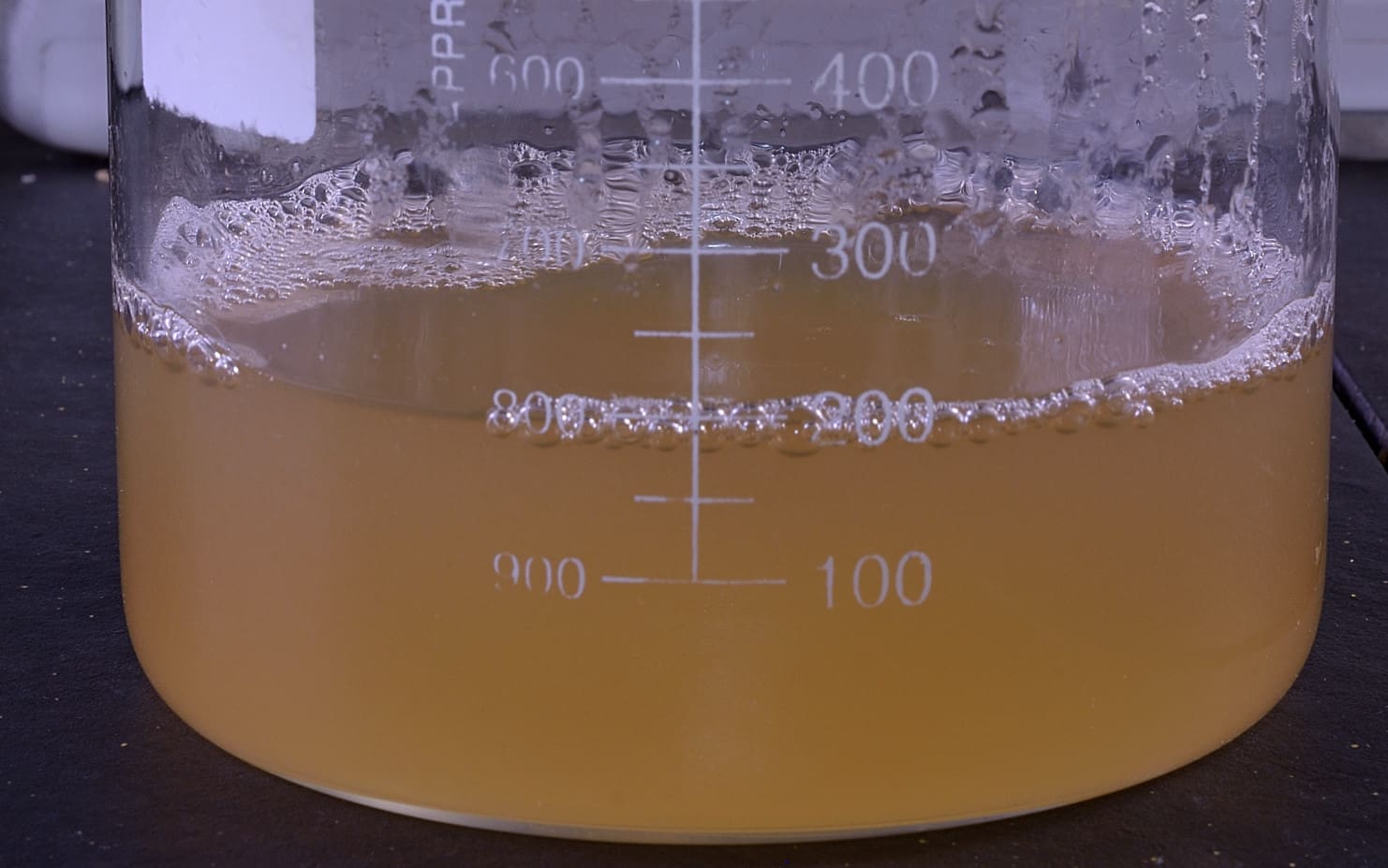
For more information about clarification, visit the link HERE.
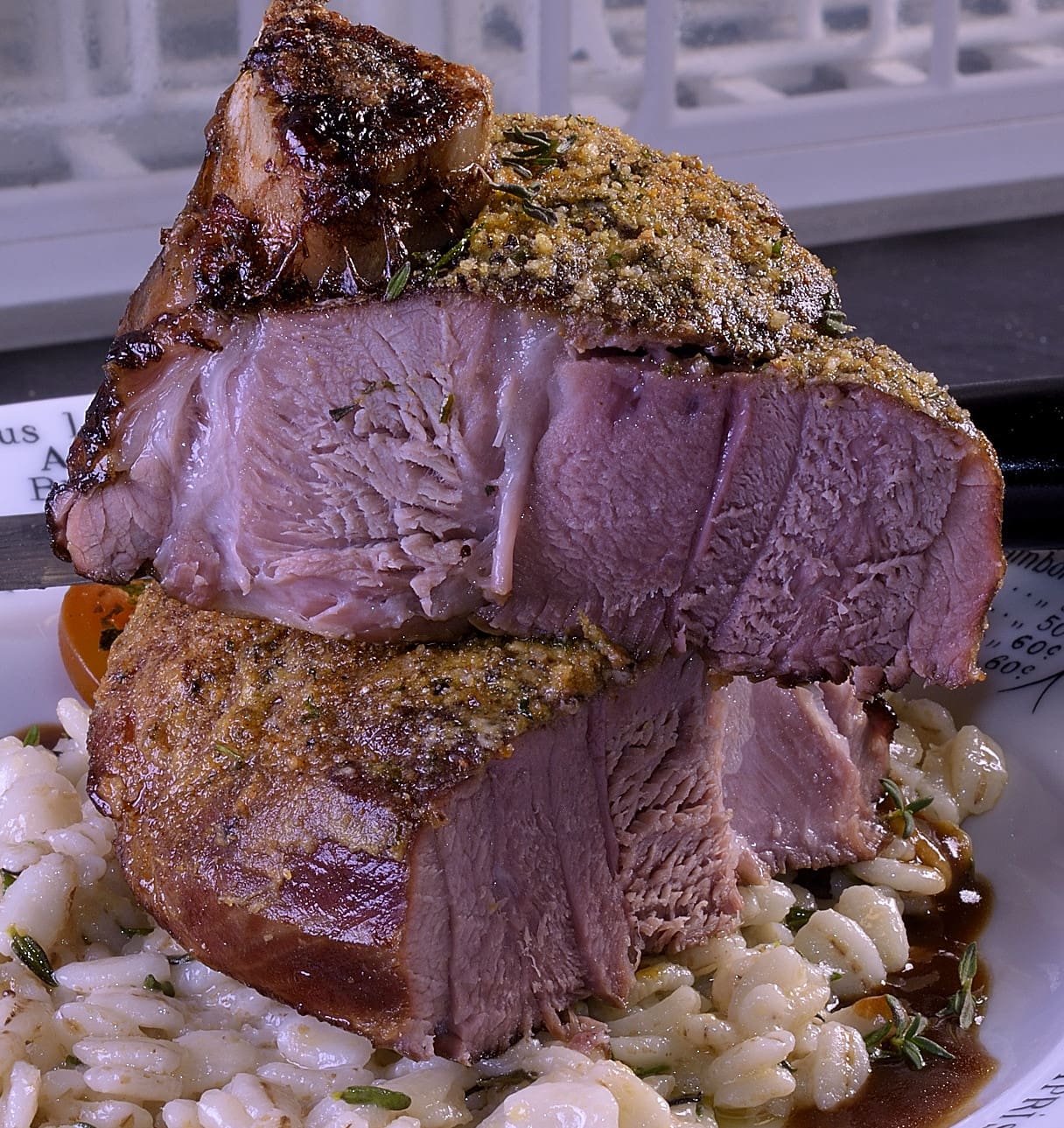
Day of service
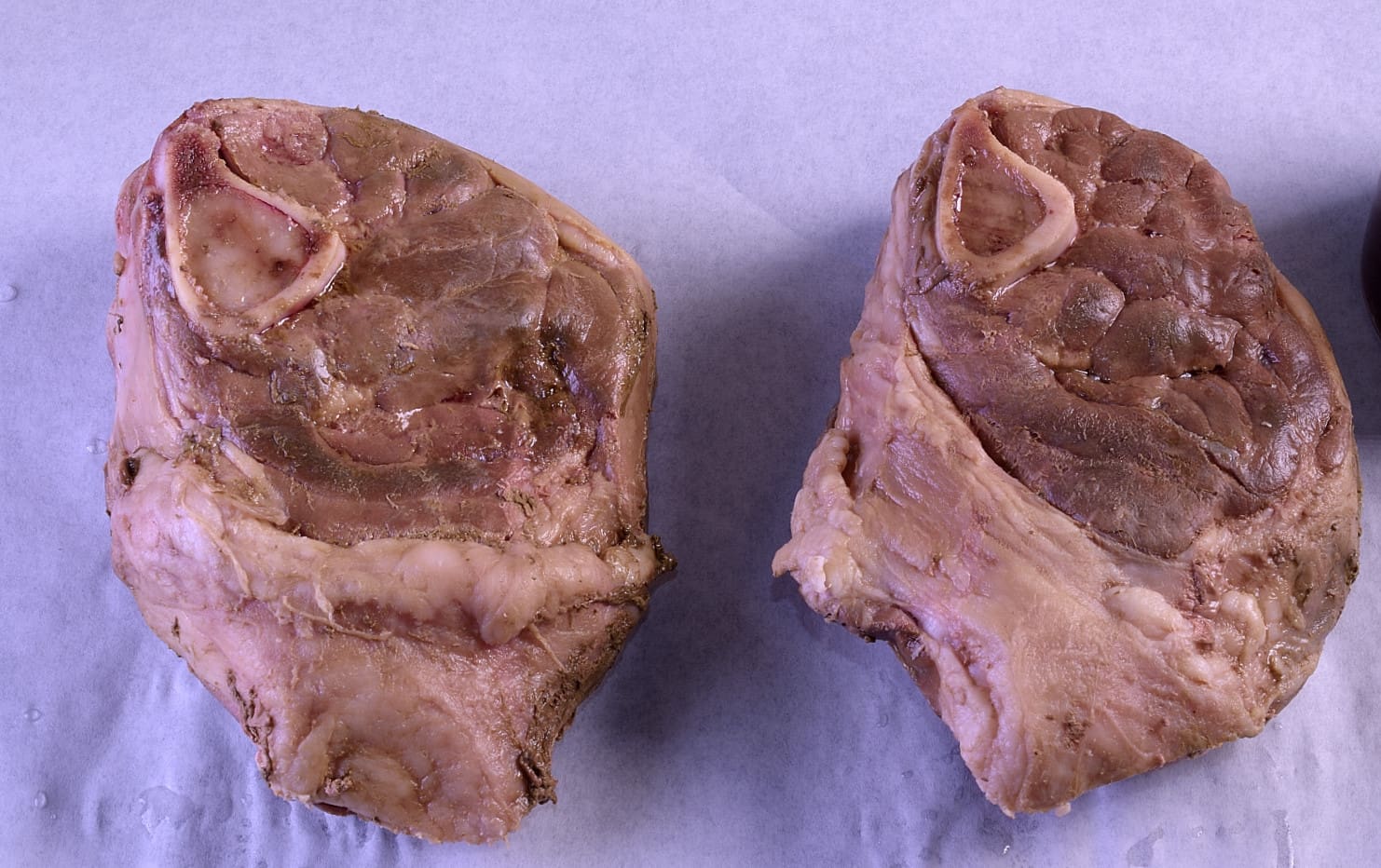
Rinse the shanks in cold water to remove any remaining debris and lay them out on parchment.

Again, make sure the hole in the bone is facing up.

This is another benefit of using sous vide to process the shanks. Traditional, high temperature methods have a tendency to melt and thereby dissolve the marrow. Sous vide will preserve its structural integrity.
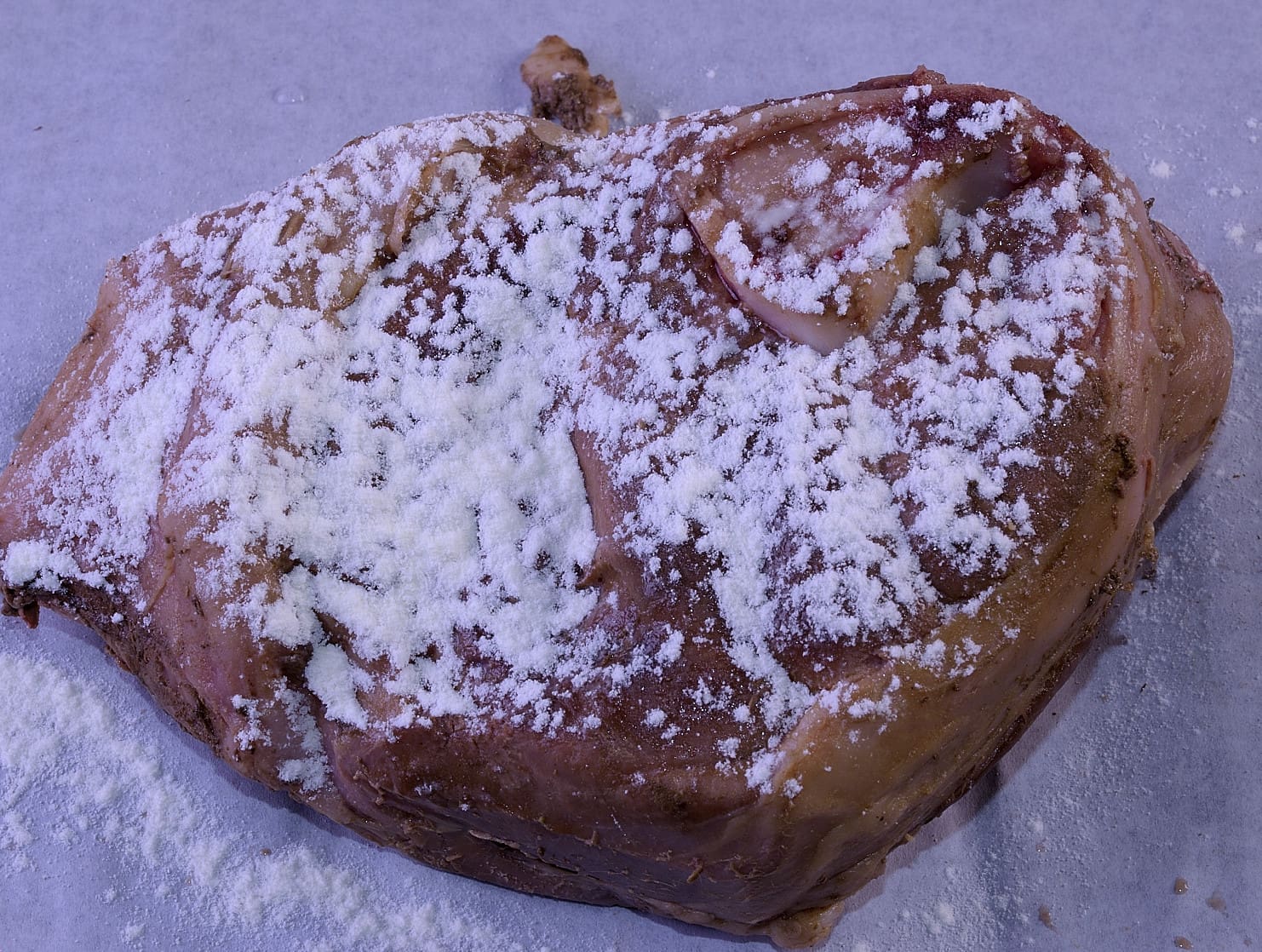
Dust with powdered egg white (or fresh if preferred, sparingly).
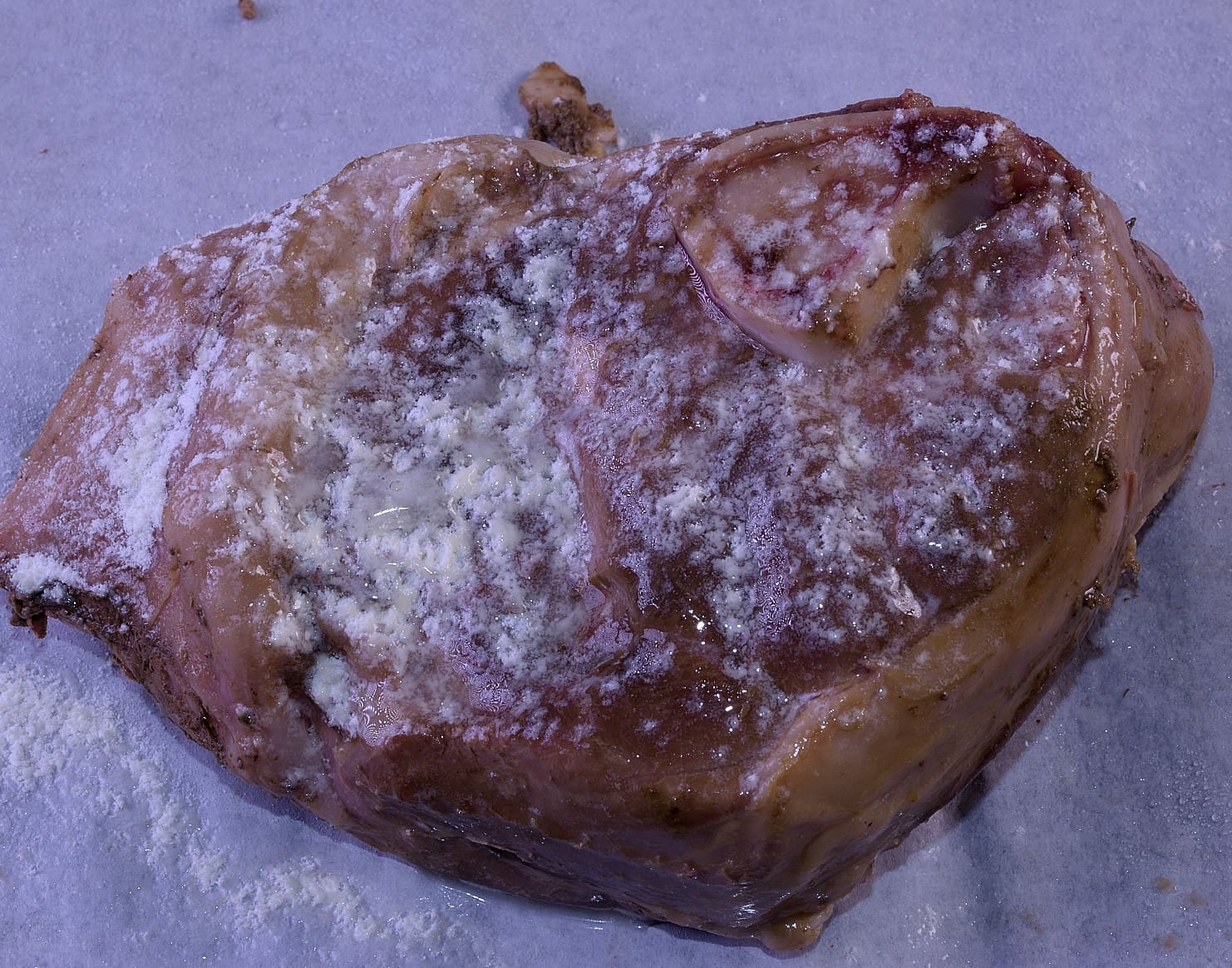
Mist with water to liquify the egg whites (not necessary if you use fresh).
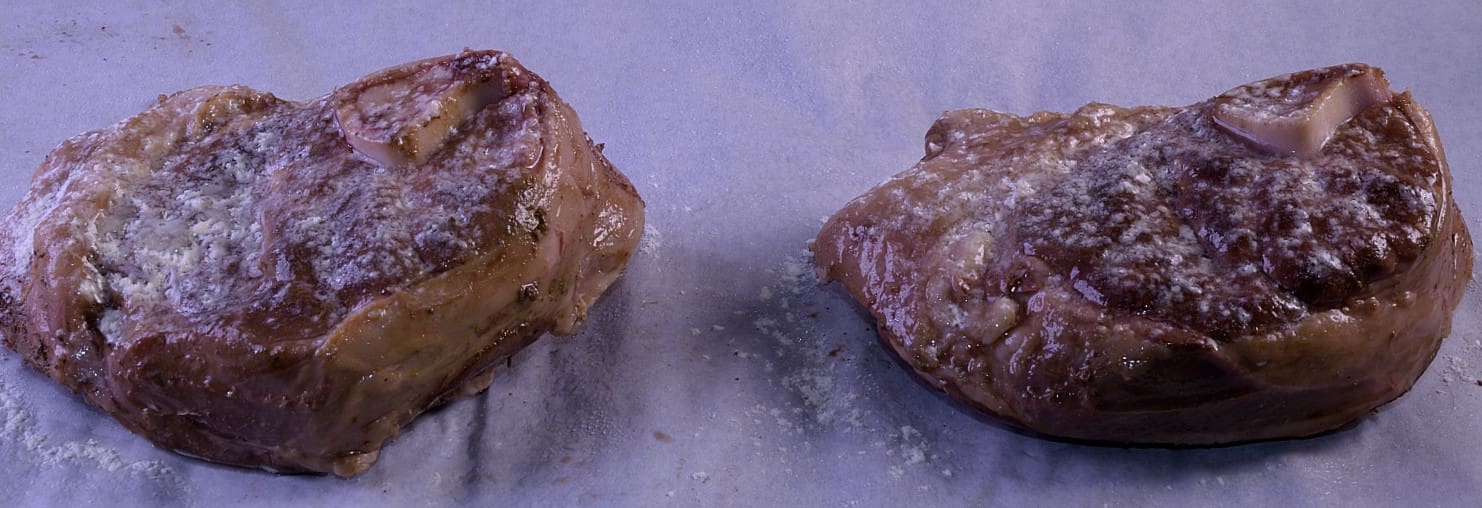
Allow a few moments to dissolve. Preheat your oven to 350 F/176 C.
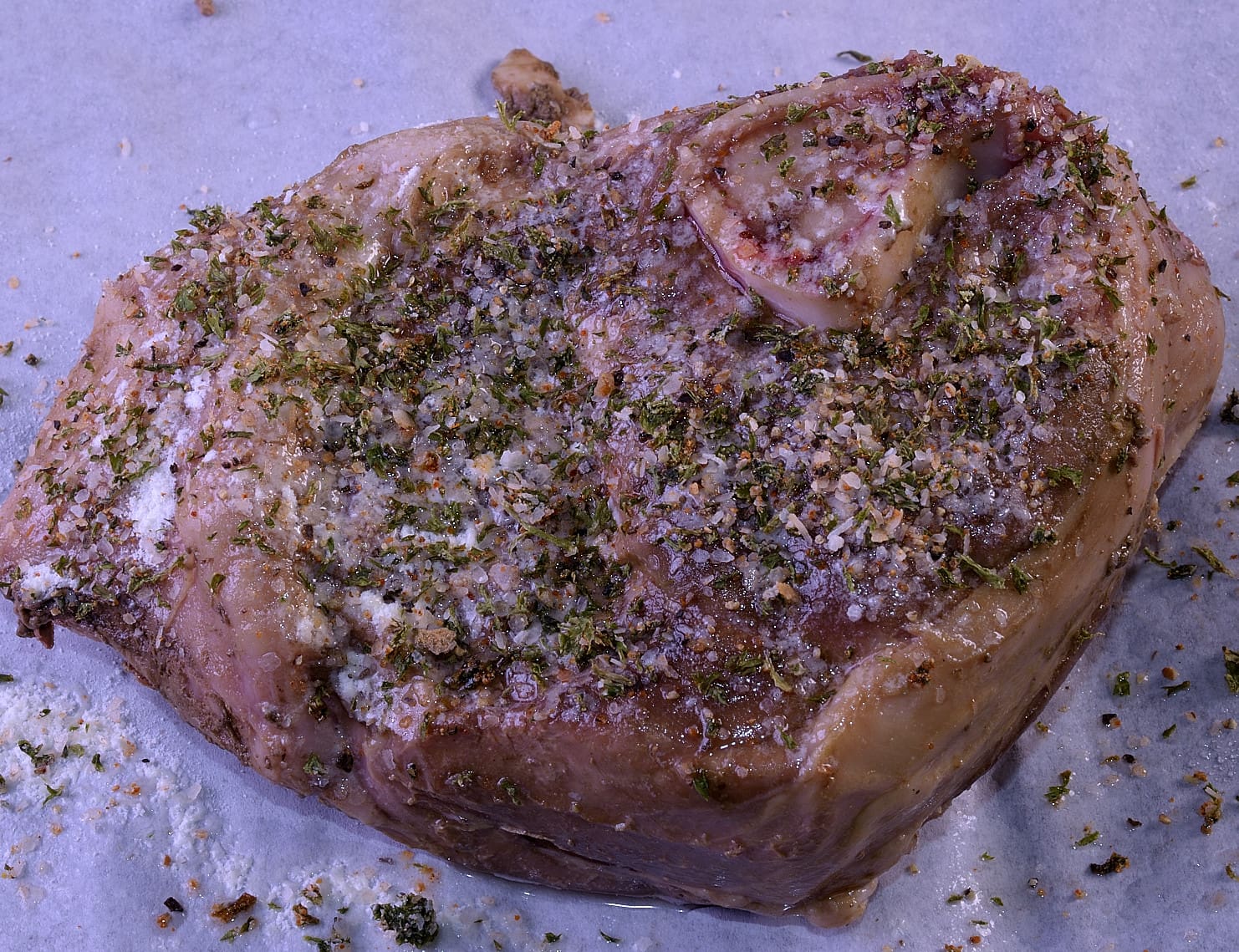
Sprinkle with your favorite seasonings or one of our recipes linked HERE.
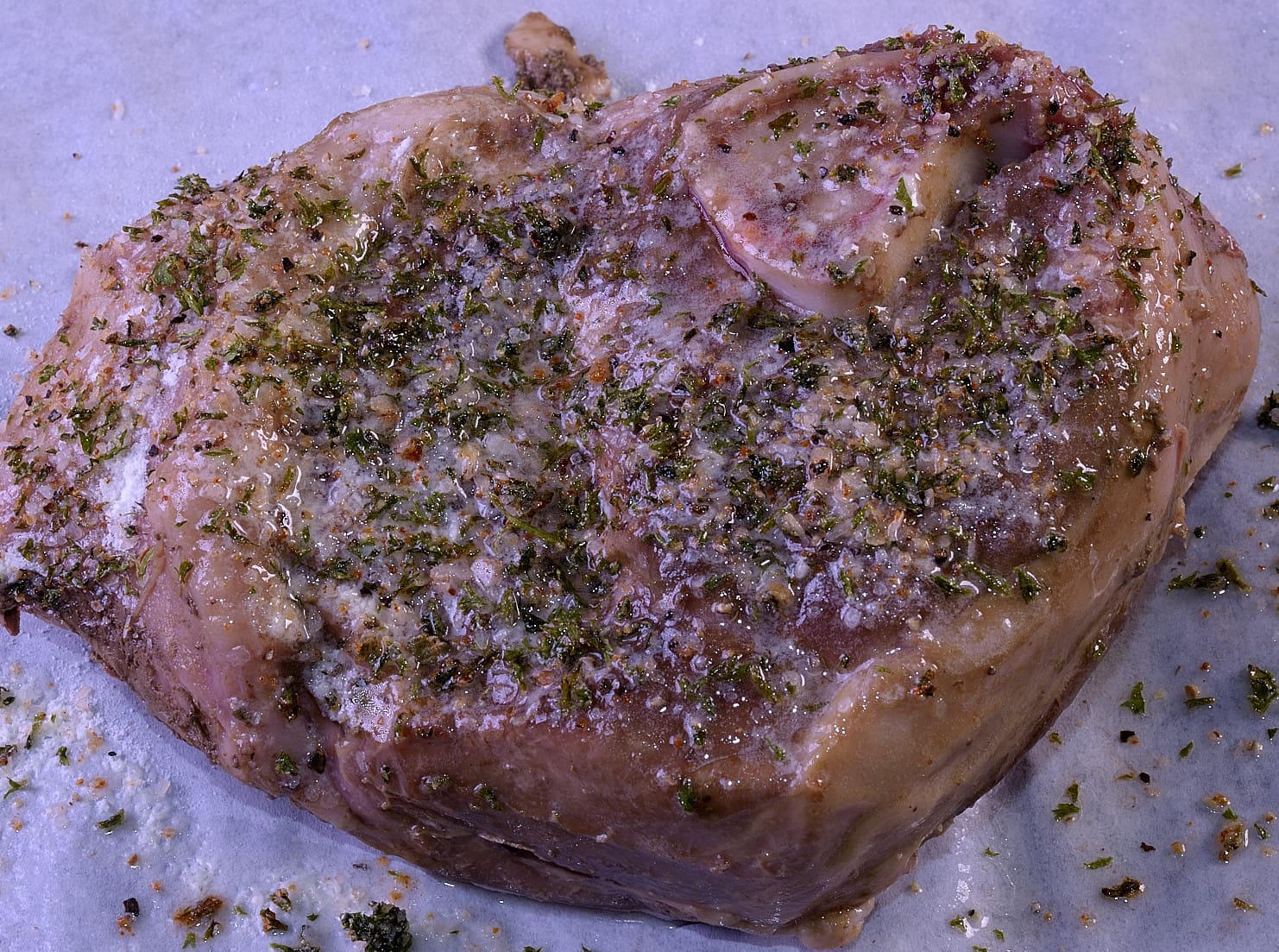
Mist or drizzle lightly with oil.
Roast the shanks for 45 minutes at 350 F/176 C.
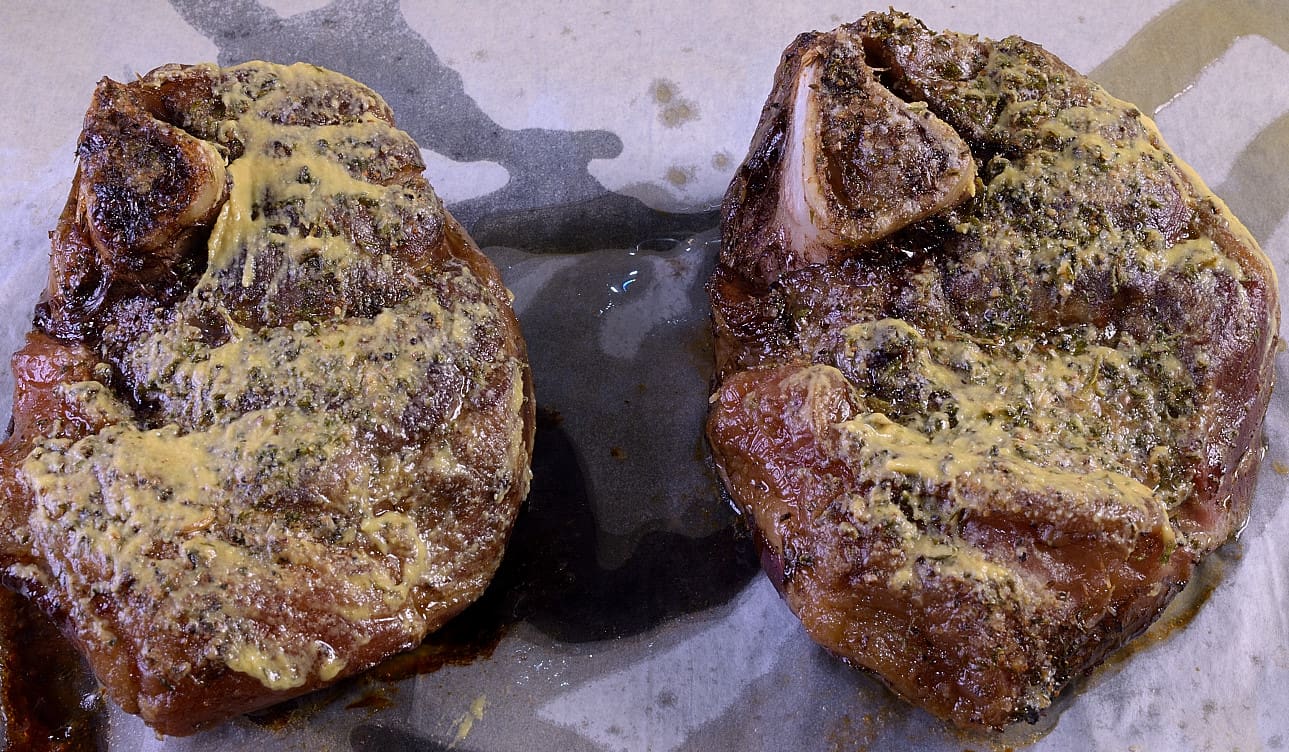
Brush the shanks lightly with Dijon mustard–a little bit goes a long way.
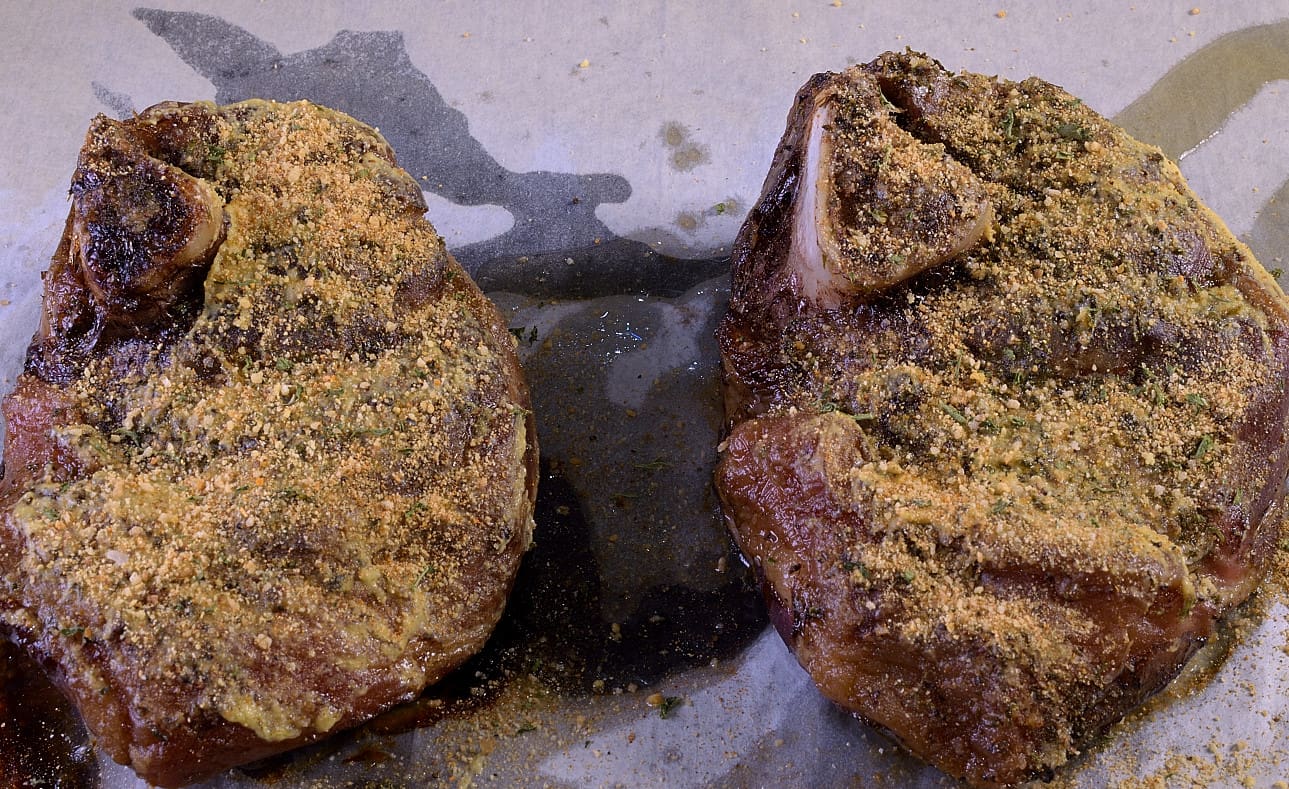
Dust with fine crumbs mixed with parsley and a little paprika. Mist lightly with oil.

Roast for another fifteen minutes. The shanks are then ready to serve.

Above: Approximately 3 Tablespoons of barley per 1 cup/225 ml of water is boiled until tender, usually about 45 minutes. It is then drained and cooled. At service, soften further by simmering in the clarified lamb sous jus and finished with the cream, butter and fresh thyme. Use clarified sous jus to fortify the Espagnole and then drizzle around the circumference. Reserve a few leaves of the thyme to sprinkle over the finished dish.
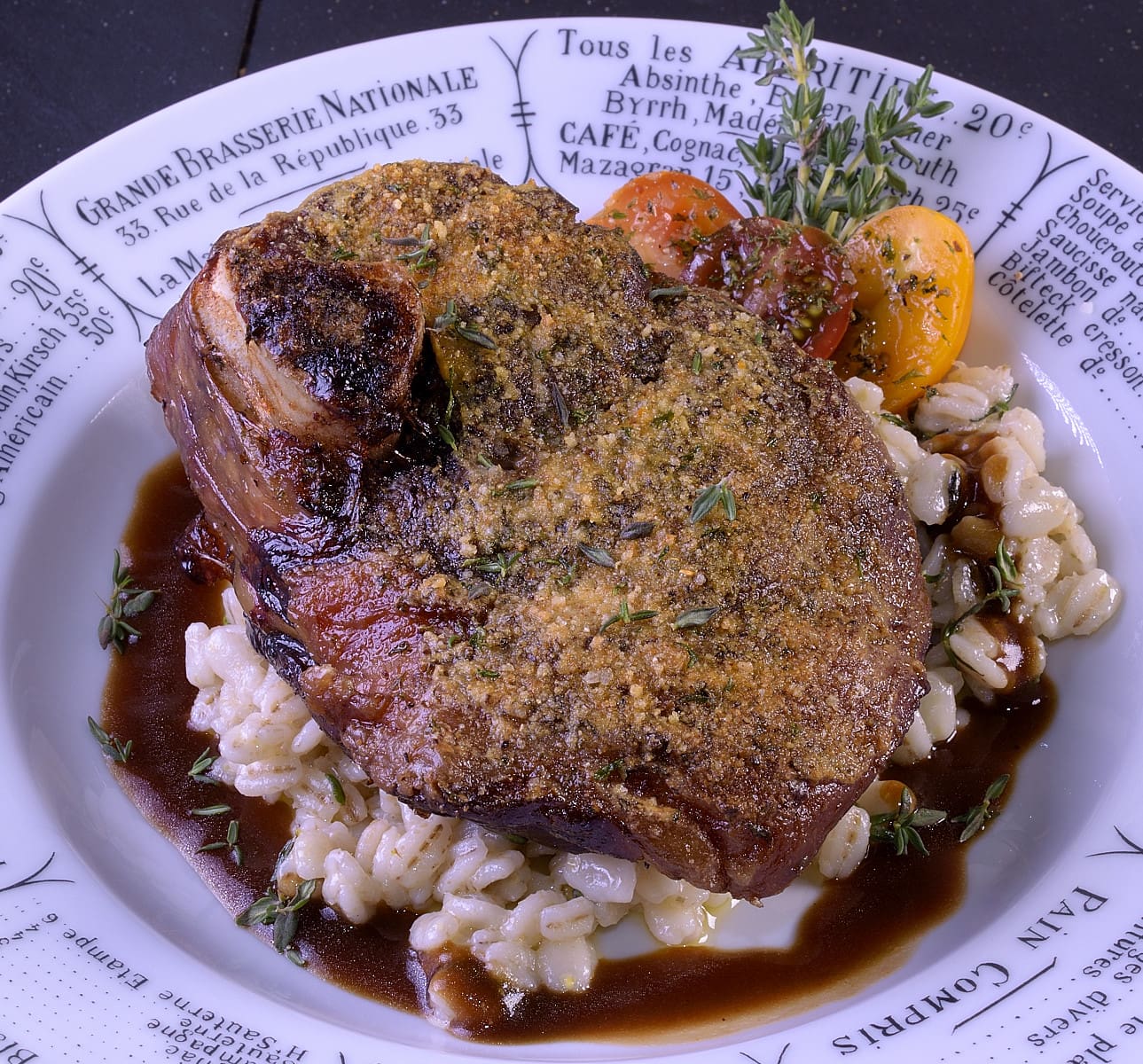
Norm



